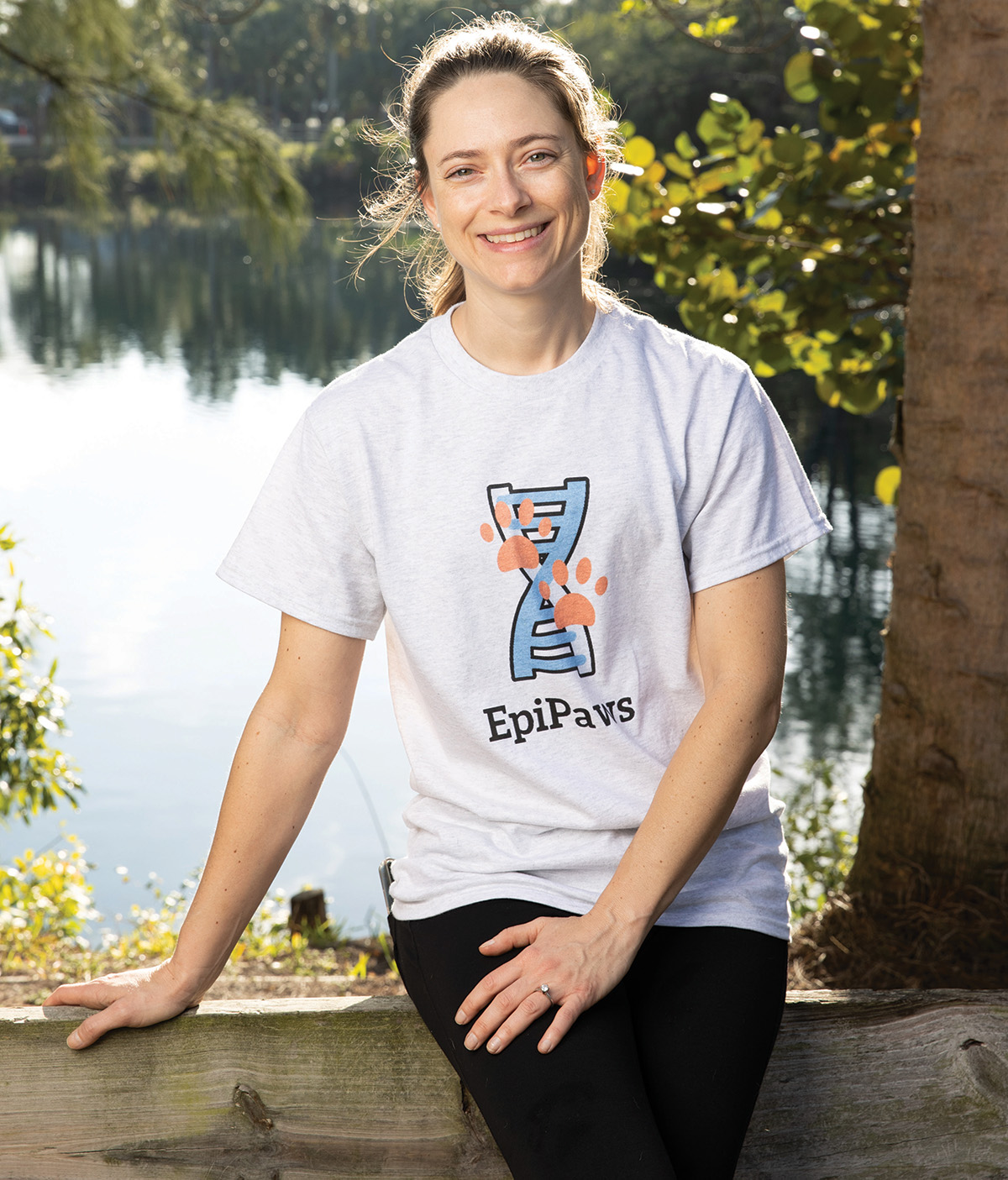How old is your pet? It’s a simple question, but unless you purchased your dog or cat directly from a reliable breeder or a pet store that keeps genetic records, the answer may prove elusive. Even for experienced veterinarians, estimating an undocumented dog or cat’s age can be a wildly inexact science.
“[The animal’s] physical features are really deceiving, and they vary per animal and per their backstory,” says Andria Beal, 35, of Fort Lauderdale, who has made it her life’s work to improve pet health. “I just had one customer where we found out the pet was probably 10 or 11, and she had been told that they could have been born in ‘22 or ‘23. That’s huge—totally different worlds.
“Some rescues, when they’re living out on the street, chew on rocks. This is very common,” adds Beal. “And then their teeth get destroyed, and that’s one of the main things [vets] use to estimate age. Other times, the eyes develop an opaqueness, but that happens prematurely for some animals.”
So Beal, who describes herself as a “problem solver,” set about creating a solution for the issue of estimating a pet’s age. She discovered it through the evolving science of epigenetics, or the study of heritable traits. Epigenetics has proven indispensable in criminal investigations, allowing law enforcement to more accurately age the DNA in blood splatter, for instance. While earning her PhD in Biology from Florida International University, class of ’21, Beal researched epigenetic biomarkers in dolphins and sharks, and created a successful age estimation test for dolphins.
A similar test to identify age in a domestic dog or cat proved to be the next logical step—part of Beal’s overarching goal to age-test animals in the wild. “Lots of people need to know how old their pets are—and we were blown away at the market size for just that test,” she says. [Americans own 78 million dogs and 86 million cats, up to 30% of which are rescues, according to the ASPCA.—Ed.] “I was like, let’s stay here for a minute … and help the other wildlife animals later.”
The result is EpiPaws, a business Beal launched in early 2023. Its first and (so far) only product, the Pet Age Test Kit ($120), allows pet owners to swab their animal’s DNA and mail the data back to Beal’s company. Four to six weeks later, they’ll receive the results, identifying the pet’s birthday within one year. Armed with this information, pet owners can better plan for their dog or cat’s future.
“A lot of people connect age to the diet, and what kind of supplements they should be providing to their pets,” Beal says. “The most useful thing is that as the pet starts to age, and they start running into those age-related issues, knowing the age starts to become really important before you jump out and do a surgery that’s going to be hard on an animal that’s maybe too fragile for it.”
Beal furthered her business model by making it into Florida Atlantic University’s Tech Runway program for promising startups, spending a year in 2023 under the tutelage of dedicated mentors—culminating in a “Shark Tank”-style pitch, late last year, to three high-powered investors as part of the university’s inaugural “Croc Tank” event. Ultimately, Kevin O’Leary, AKA Mr. Wonderful of “Shark Tank,” chose EpiPaws for a $250,000 investment in return for a 20% share in the company.
While the collaboration with O’Leary was still in the “due diligence” stage as of this writing, Beal hopes to funnel the money into EpiPaws’ next venture—a biological age test to accompany her chronological test. “As our data set grows, the more health insights we can start making into [how] environmental variables can affect health—and, importantly, how they affect disease development,” Beal says. “Because at the end of the day, with this research, we can start avoiding disease development that’s highly influenced by environmental variables that we hadn’t realized were having that big of an effect on our pets’ health.”
Beal, a longtime pet owner who shares her home with a husband and three mixed-breed fur babies, never takes her eyes off the end goal: extending the lives of our four-legged loved ones. “As a pet owner myself, I want my pets to live forever if they could,” she says. “This whole field of longevity has blown up, and they’re talking about how long humans could live. But I think there’s a bigger impact that could be made on our pets, just looking at how we feed them in particular. There’s so much room for improvement there. … We can make our pets live a lot longer than they are right now.”
This article is from the April 2025 issue of Boca magazine. For more like this, click here to subscribe to the magazine.







